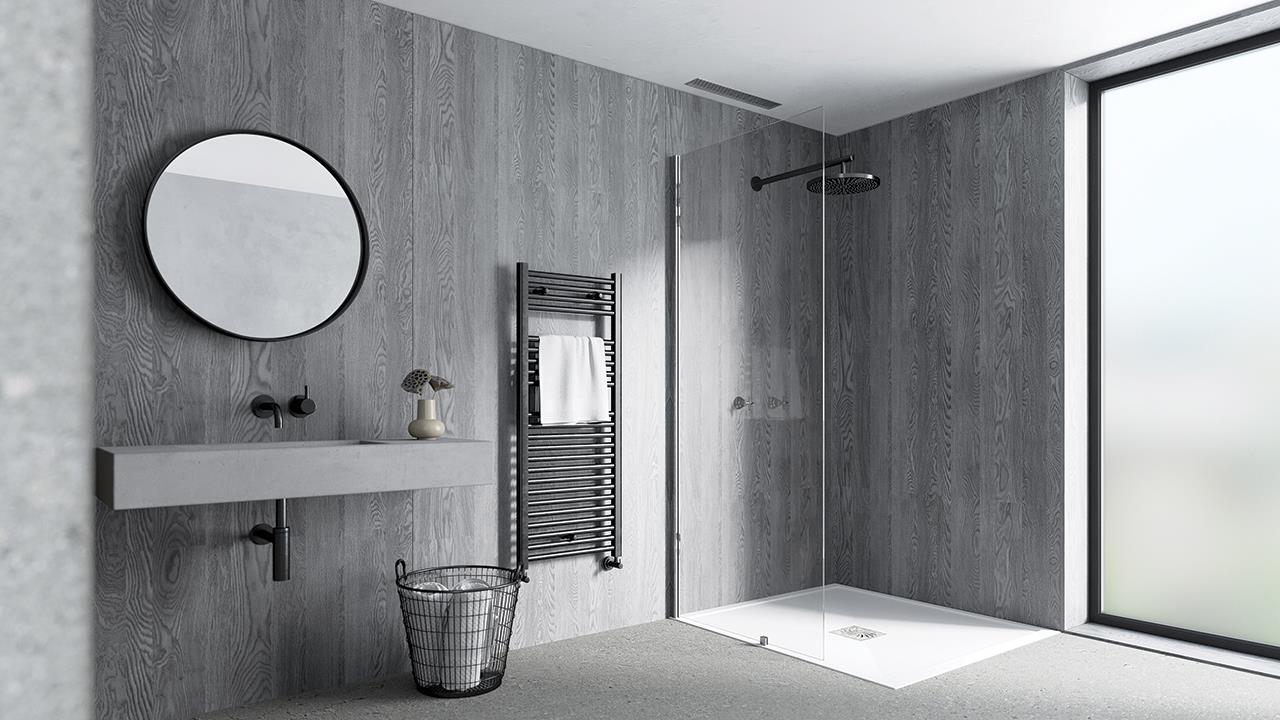

Bathroom panels are an increasingly desirable surface solution for installers, providing many benefits over more traditional tiles.
From easy, time-saving installation processes requiring no specialist tools, to long-lasting, 100% waterproof finishes that are grout and trim-free, working with bathroom panels can add another string to your professional bow, allowing you to offer your customers a complete bathroom service with a premium feel while remaining practical and affordable.
While fitting bathroom panels is a relatively straightforward process, as when getting to grips with any new product or material, there are some common questions that can arise and best practices that should be followed to achieve the desired outcome for a job.
Will I need to fit the panels with trims?
This varies from brand to brand and product to product. With many panels, trims are required and these are often available in a corresponding design to the panel decor via the manufacturer.
However, for an even more refined and premium finish that will further speed up the fitting process, opt for panels with a fully waterproof core and post-formed edges which eliminate the need for trims and grouting. For this style of product specification, colour coordinated sealant is used instead of trims to create a truly seamless finish.
Which adhesive should I use?
It is important to always follow the guidance and recommendations of your bathroom panel manufacturer to ensure your installation remains eligible under warranty criteria.
At Mermaid, for example, we rigorously test all our recommended adhesives and sealants to ensure the best quality when fitting our panels.
Can you create a tile look with panels?
While panels are the more practical option, many customers still love the aesthetic of tiles, despite the maintenance involved in upkeeping grout lines to prevent the build-up of mould and mildew.
To offer the best of both worlds, you can now fit panels that are designed to align like tiles and even include fake grouting.
This is still a relatively new area of innovation for the surfaces market, and one that is expected to continue to grow in demand from fitters and consumers alike over the coming years.
What preparation is needed?
In many cases, panels can be applied over existing tiles or plasterboard, which means that minimal preparation work is often required.
However you should always follow the product’s fitting instructions for the latest up to date guidance. This makes bathroom panels particularly ideal for smaller refurbishments or simple retrofit projects, as you can help your customer create a completely new look in their bathroom quickly and on a budget.
Does the location of the first panel matter?
The design of some products make it is possible to start on any wall within the room and cut the panels so that they finish in the internal corners.
For the best result, care should be taken to space the panel joints to avoid small difficult panel cuts near the corners or around doors and windows.
Does it matter which way you fit the panels?
Once again, this will vary from product to product.
A good indicator is that if the edge details are the same on both the top and bottom of the panel, you can fit the panels either way up and will be guaranteed to have a square edge fitted into the corner with the edge with the groove and lip on the outside.
However, panels using tongue and groove, or those panels which are more decorative in design, will typically arrive with the design predetermined randomly connected to the tongue and groove or post-formed edge.
The layout of the space will then dictate left hand/right hand, which also sets design up or down.
If you'd like to keep up-to-date with the latest developments in the heating and plumbing industry, why not subscribe to our weekly newsletters? Just click the button below and you can ensure all the latest industry news and new product information lands in your inbox every week.